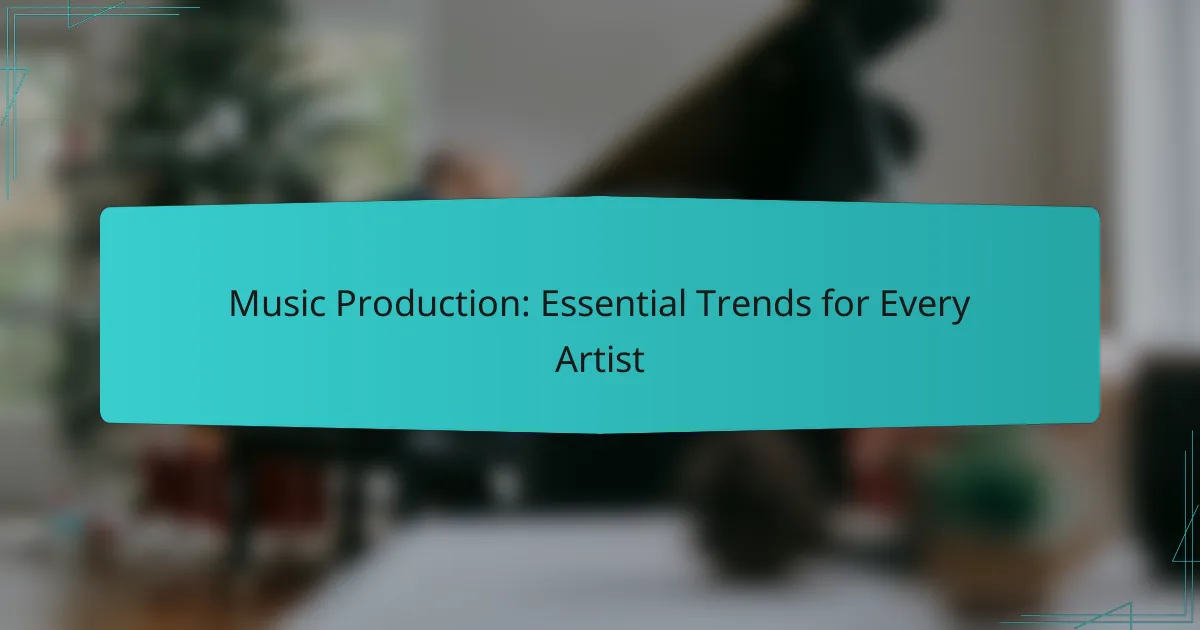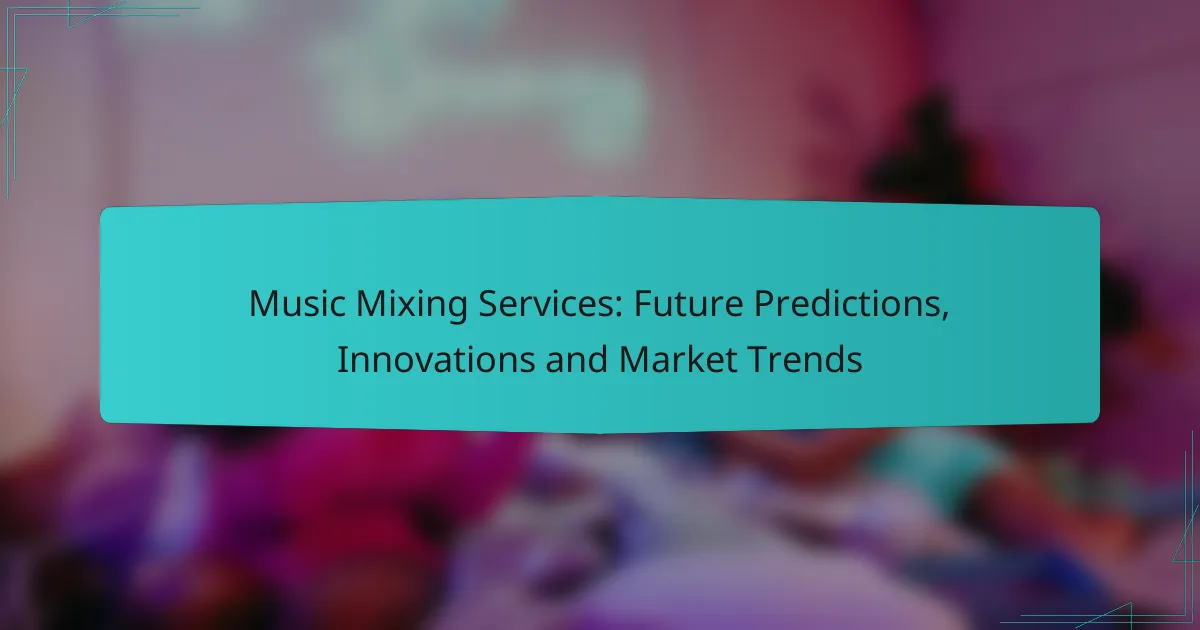Social media has become a pivotal force in shaping music production trends, allowing artists to collaborate, receive instant feedback, and leverage viral marketing. Platforms like Instagram, TikTok, and YouTube each offer distinct advantages for music promotion, making it essential for producers to select the right medium based on their specific goals. By creating engaging and interactive content, music producers can cultivate a strong sense of community and enhance audience participation.
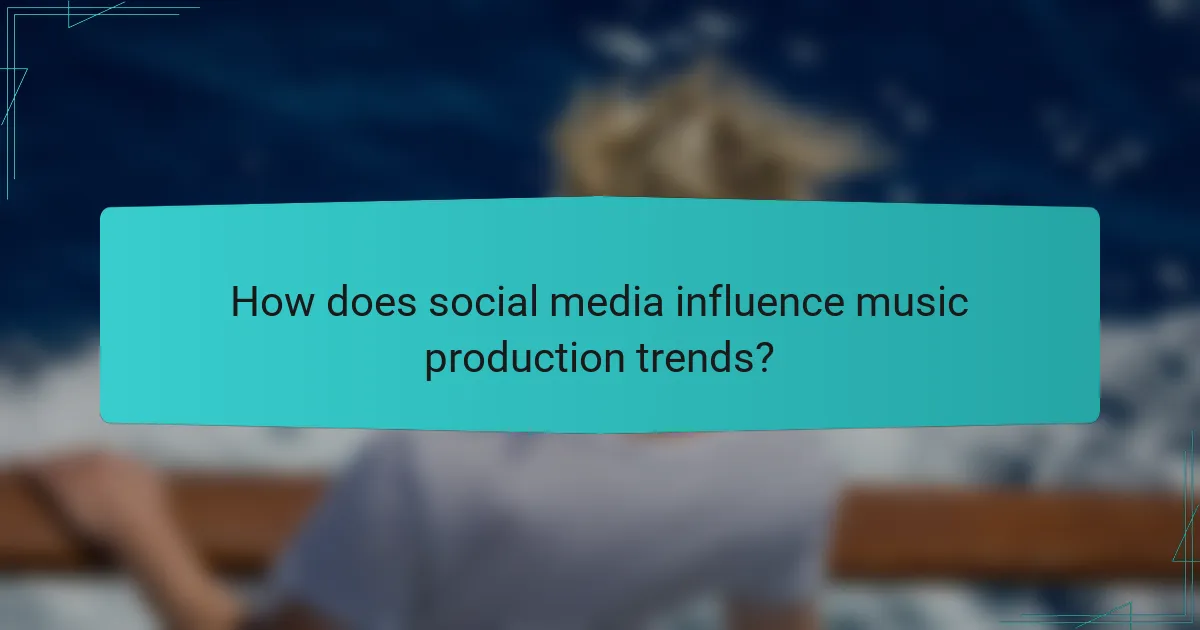
How does social media influence music production trends?
Social media significantly shapes music production trends by facilitating collaboration, enabling real-time audience feedback, and enhancing viral marketing opportunities. These platforms allow artists to connect with peers and fans, influencing their creative processes and promotional strategies.
Increased collaboration opportunities
Social media platforms provide musicians with unprecedented access to potential collaborators worldwide. Artists can easily share their work, seek feedback, and find like-minded individuals to create new music together, regardless of geographical barriers.
For instance, platforms like Instagram and TikTok allow producers to showcase their beats, inviting vocalists and songwriters to contribute. This can lead to unique blends of styles and genres that might not have emerged in traditional studio settings.
Real-time audience feedback
Social media enables artists to receive immediate feedback from their audience, which can influence their music production decisions. By posting snippets of songs or demos, musicians can gauge listener reactions and adjust their work accordingly.
This feedback loop can be particularly beneficial for emerging artists, as it helps them understand their audience’s preferences and refine their sound before a full release. Engaging with fans through comments or polls can also foster a sense of community and loyalty.
Viral marketing potential
The potential for music to go viral on social media is a powerful tool for promotion. A catchy hook or a unique music video can quickly gain traction, reaching millions of listeners in a short time. This phenomenon can lead to increased streams and sales, often translating into chart success.
Artists should consider creating shareable content, such as challenges or trends related to their music, to maximize their chances of going viral. Collaborating with influencers or leveraging trending hashtags can further enhance visibility and engagement.
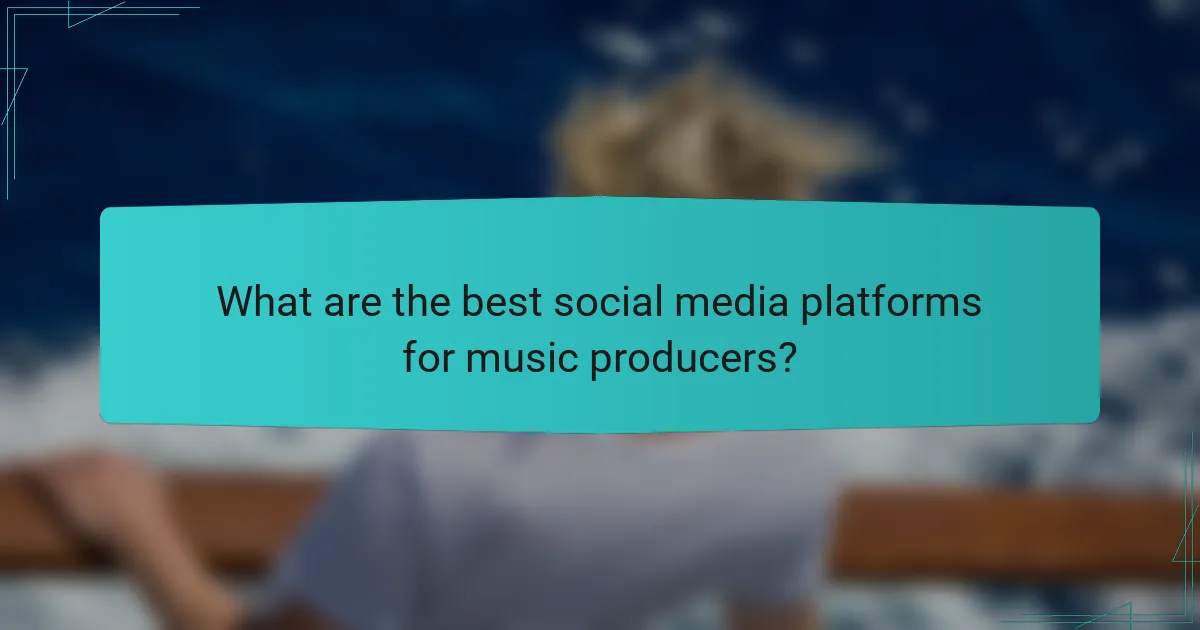
What are the best social media platforms for music producers?
The best social media platforms for music producers include Instagram, TikTok, and YouTube, each offering unique features that cater to different aspects of music promotion and engagement. Choosing the right platform depends on your goals, whether it’s visual storytelling, viral marketing, or educational content.
Instagram for visual storytelling
Instagram excels in visual storytelling, making it ideal for music producers to showcase their creative process and brand. High-quality images, engaging stories, and short videos can effectively capture the attention of potential fans and collaborators.
To maximize engagement, use Instagram Reels to share snippets of your music production, behind-the-scenes content, or even live jam sessions. Consistency in posting and using relevant hashtags can significantly increase your visibility.
TikTok for viral music promotion
TikTok is a powerful platform for viral music promotion, allowing producers to reach a wide audience quickly. The app’s algorithm favors creative and engaging content, making it easier for new tracks to gain traction through challenges and trends.
Consider creating catchy snippets of your music that can be used in user-generated content. Collaborating with influencers or participating in trending challenges can also enhance your reach and engagement.
YouTube for tutorials and engagement
YouTube serves as an excellent platform for tutorials and deeper engagement with your audience. As a music producer, you can create content that teaches others about your production techniques, software, or gear, establishing yourself as an authority in the field.
Regularly upload videos that include tips, walkthroughs, or even full production sessions. Engaging with comments and encouraging viewers to subscribe can help build a loyal community around your music.

How can music producers engage their audience on social media?
Music producers can engage their audience on social media by creating interactive and authentic content that fosters a sense of community. Utilizing various formats such as live streaming, behind-the-scenes glimpses, and interactive polls can significantly enhance audience connection and participation.
Live streaming sessions
Live streaming sessions allow music producers to connect with their audience in real-time, creating an intimate and engaging experience. Producers can showcase their creative process, host Q&A sessions, or even perform live, which can attract a larger audience and increase follower engagement.
To maximize impact, consider scheduling streams at times when your audience is most active, and promote the event in advance across your social media platforms. Engaging with viewers through chat during the stream can further enhance their experience and encourage loyalty.
Behind-the-scenes content
Sharing behind-the-scenes content gives fans a glimpse into the music production process, making them feel more involved in the journey. This could include videos or photos of studio sessions, equipment setups, or even the challenges faced during production.
Producers should aim to share content that highlights their personality and creative style, as this authenticity resonates well with audiences. Regularly posting this type of content can keep followers interested and invested in upcoming projects.
Interactive polls and Q&As
Interactive polls and Q&As are effective tools for engaging audiences and gathering feedback. Producers can use polls to ask fans about their preferences, such as favorite tracks or upcoming collaborations, which not only fosters interaction but also provides valuable insights.
Hosting Q&A sessions allows fans to ask questions directly, creating a dialogue that strengthens the relationship between the producer and their audience. Utilizing stories or live features on platforms like Instagram or Facebook can facilitate these interactions seamlessly.
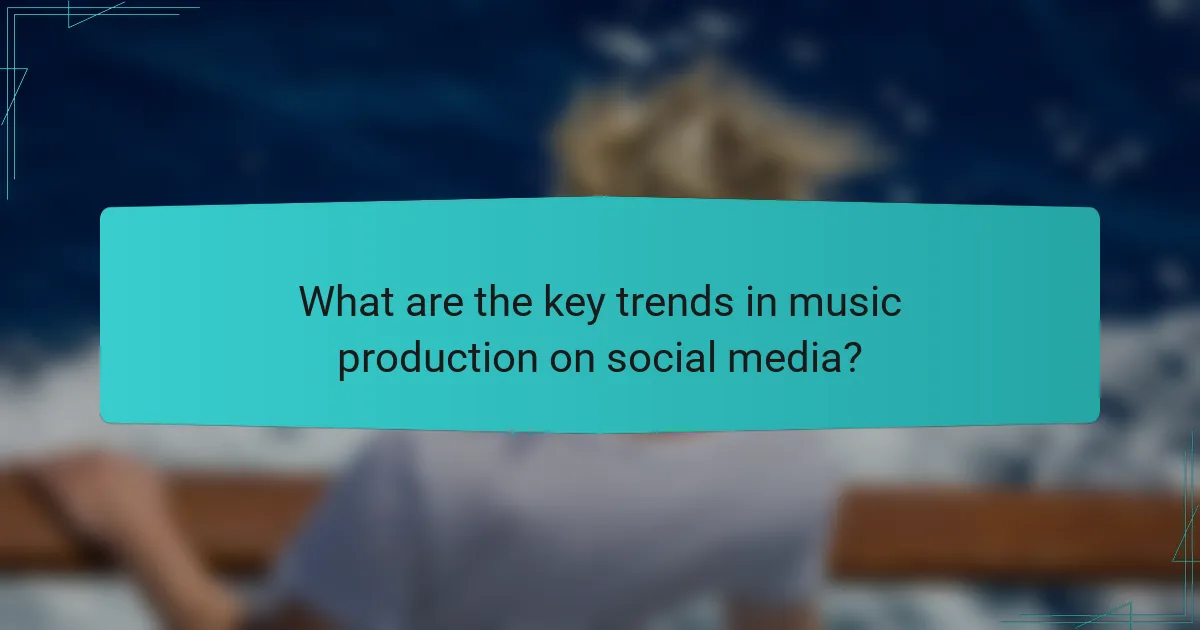
What are the key trends in music production on social media?
Key trends in music production on social media include the integration of artificial intelligence, a focus on authenticity and storytelling, and the rise of niche genres. These trends shape how artists create, share, and engage with their audiences, influencing both production techniques and marketing strategies.
Use of AI in music creation
The use of AI in music creation is transforming how artists produce tracks. AI tools can assist in composing melodies, generating beats, and even mastering songs, allowing musicians to experiment with new sounds and styles efficiently. For example, platforms like Amper Music and AIVA enable users to create music by simply inputting parameters.
While AI can enhance creativity, it’s essential to maintain a balance between technology and human touch. Over-reliance on AI might lead to a loss of originality, so artists should use these tools as assistants rather than replacements.
Emphasis on authenticity and storytelling
Authenticity and storytelling have become central to music production, especially on social media. Audiences are increasingly drawn to artists who share genuine experiences and narratives through their music. This trend encourages musicians to connect with fans on a personal level, fostering loyalty and engagement.
To leverage this trend, artists should focus on crafting relatable stories within their songs and use platforms like Instagram and TikTok to share behind-the-scenes content. This approach not only enhances the emotional connection with listeners but also encourages sharing and interaction.
Growth of niche genres
The growth of niche genres is reshaping the music landscape, with social media playing a crucial role in their popularity. Platforms allow artists to reach specific audiences who appreciate unique sounds, leading to the emergence of genres like lo-fi hip hop, bedroom pop, and synthwave. This diversification enables artists to find their unique voice and build dedicated fan bases.
Musicians should consider exploring niche genres to differentiate themselves in a crowded market. Collaborating with other artists in similar genres and engaging with niche communities online can help amplify their reach and foster a supportive network.
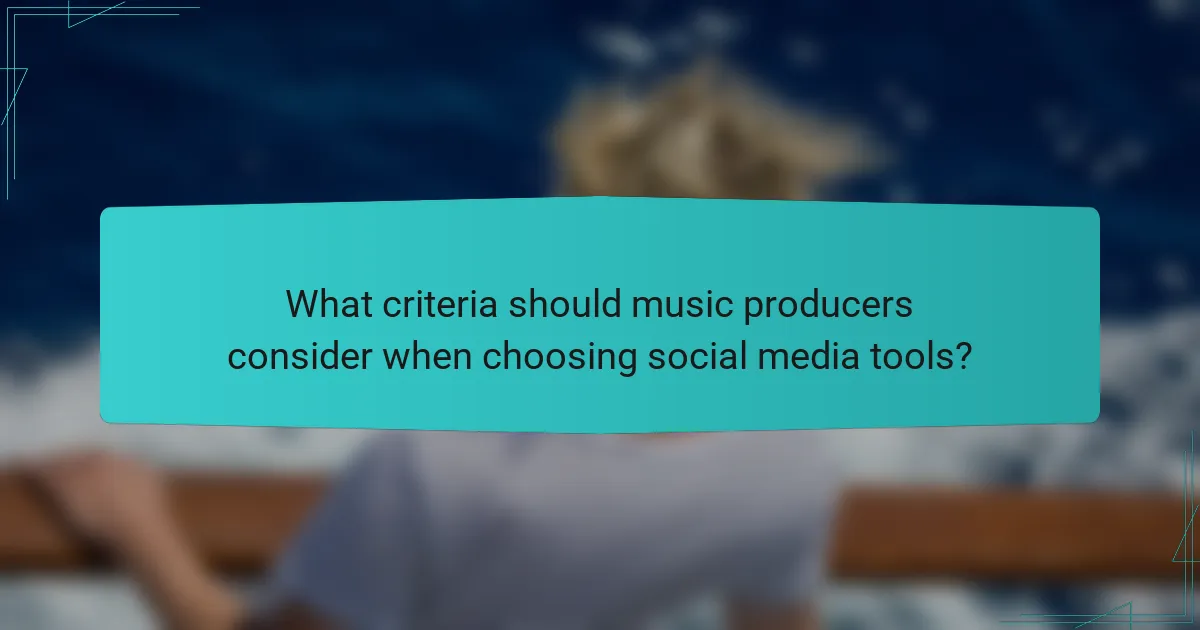
What criteria should music producers consider when choosing social media tools?
Music producers should evaluate social media tools based on user demographics, content format compatibility, and analytics capabilities. These criteria help ensure effective engagement with the target audience and maximize the impact of promotional efforts.
User demographics
Understanding user demographics is crucial for music producers when selecting social media platforms. Different platforms attract varied age groups, interests, and geographic locations, which can influence how well music content resonates with potential listeners.
For instance, platforms like TikTok are popular among younger audiences, while Facebook tends to have a broader age range. Producers should consider where their target audience spends their time and tailor their social media strategy accordingly.
Content format compatibility
Each social media platform supports different content formats, which can affect how music producers share their work. For example, Instagram is ideal for visual content, while Twitter is better suited for quick updates and links.
Producers should assess whether their music can be effectively showcased through video, audio snippets, or images. Choosing platforms that align with their preferred content style can enhance audience engagement and retention.
Analytics and performance tracking
Analytics tools are essential for music producers to measure the effectiveness of their social media efforts. Platforms like Facebook and Instagram provide insights into engagement rates, audience demographics, and content performance, allowing producers to refine their strategies.
Producers should prioritize tools that offer robust analytics features, enabling them to track metrics such as reach, clicks, and conversions. Regularly reviewing these metrics can help identify successful content types and inform future promotional decisions.
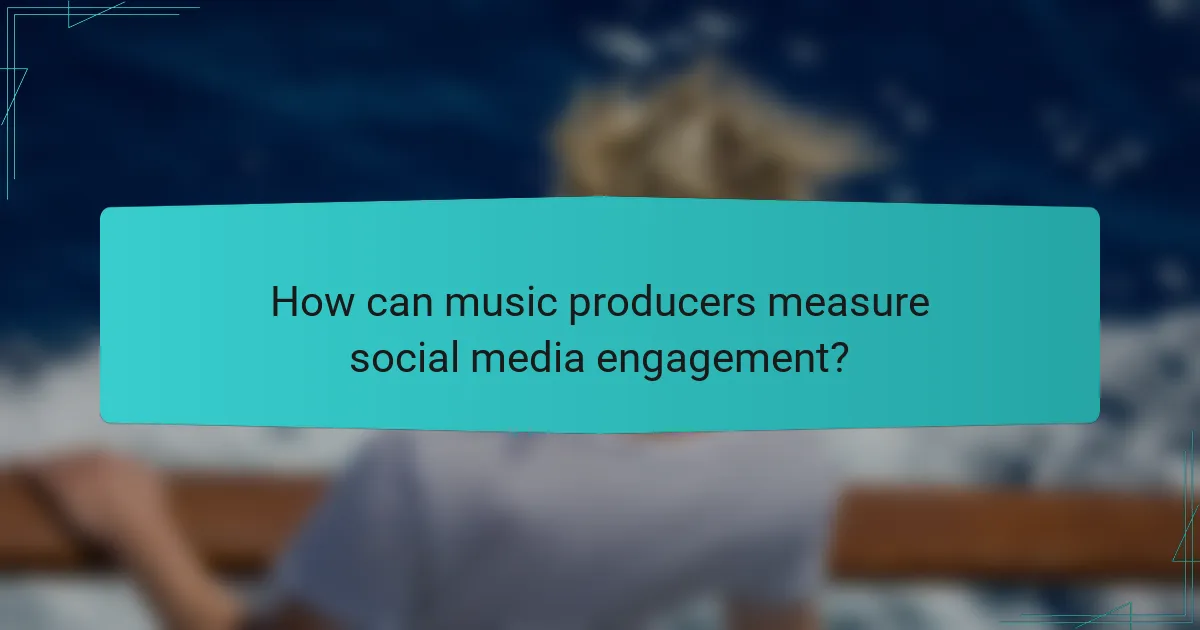
How can music producers measure social media engagement?
Music producers can measure social media engagement by analyzing metrics such as likes, shares, comments, and follower growth. These indicators provide insights into how well content resonates with audiences and can guide future marketing strategies.
Engagement rate analysis
Engagement rate analysis involves calculating the percentage of interactions relative to total followers or impressions. This metric helps producers understand the effectiveness of their posts and campaigns in generating audience interest.
To calculate engagement rate, use the formula: (Total Engagements / Total Followers) x 100. A typical engagement rate for the music industry can range from 1% to 5%, depending on the platform and audience size.
Producers should regularly track engagement rates across different platforms to identify trends and adjust their content strategies accordingly. High engagement rates often indicate a strong connection with the audience, while low rates may signal the need for content reevaluation.

